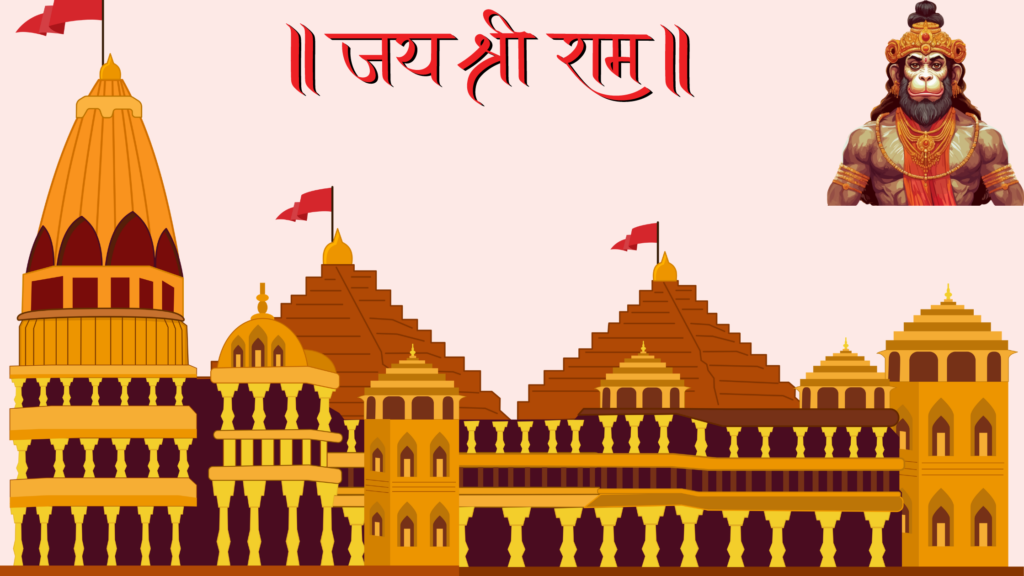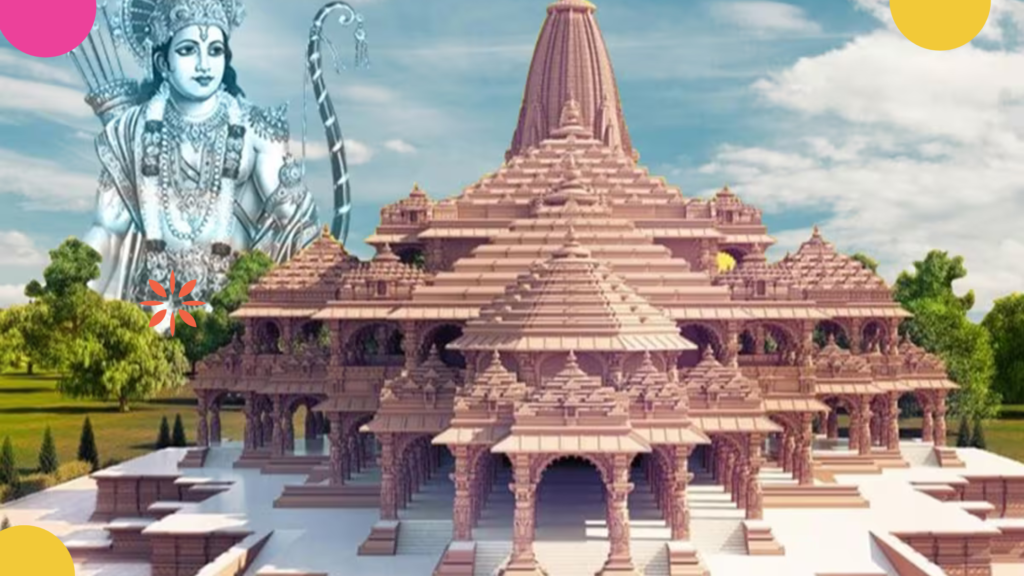Encapsulating a story rooted in millennia of history, the Ram Mandir in Ayodhya has been a lasting emblem of religious, cultural, and political confluence. The 20s Contentious best of Ram Mandir in Ayodhya India’s socio-political fabric has been profoundly impacted by the disputes surrounding the construction of the Ram Mandir, especially the controversial incident involving the demolition of the Babri Masjid. In this in-depth investigation, we examine the complex historical context, the drawn-out legal disputes, and the most recent events that have led to the building of the Ram Mandir in Ayodhya.
Table of Contents
The Historical Tapestry of The 20s Contentious best of Ram Mandir in Ayodhya:
- Following Roots: The Ayodhya dispute dates back to the 16th century, when the Babri Masjid was built on the disputed territory by Emperor Babar and his commander Mir Baqi. According to historical accounts, the mosque was built on top of the remains of an earlier Ram Mandir, which created the conditions for the ongoing conflict between the Muslim and Hindu populations.
- Legal Echoes in the Late 19th Century: In the late 19th century, King Jai Singh of Jaipur filed a lawsuit claiming control of the property so that a Ram Mandir could be built. This marked the beginning of the legal dispute over who owned the site. In spite of his efforts, sections of the contested site were set aside for Muslim and Hindu devotion. The foundation for further confrontations was established by this split.

The Unrest of the 20th Century:
- The 1940s and emotions in the community: As the mid-1900s progressed, emotions around the Ayodhya issue intensified, leading to a number of communal riots. The conflict between the two groups was exacerbated by a study published by the British administration in the 1940s that revealed there was a Hindu temple located beneath the Babri Masjid.
- 1980s Political Undertones: The Ayodhya dispute transformed into a powerful political force in the 1980s. The demand for building a Ram Mandir was led by the Bharatiya Janata Party (BJP) and many right-wing Hindu groupings. Leading this effort was L.K. Advani, who conducted a Rath Yatra to enhance the cause’s resonance.
The Babri Masjid Demolition: The Ultimate and Precipice
- December 1992: A Day of Destiny: The Babri Masjid was destroyed by a zealous group of Hindu activists on a tragic day in December 1992, marking the height of the Ayodhya conflict. This incident had far-reaching effects on the country, sparking severe communal rioting and irreversibly rupturing India’s social fabric.
- Legal Aftermath: Decades of legal fights ensued following the demolition of the Babri Masjid. The Liberhan Commission, established in 1992, was one of several committees and commissions entrusted with looking into the incident. In 2009, the findings of the Liberhan Commission accused a number of political figures and groups of involvement in the demolition.
A Much-Awaited Decision of The 20s Contentious best of Ram Mandir in Ayodhya:
- Supreme Court Announcement, November 2019: In November 2019, the Supreme Court of India rendered a landmark decision following years of legal wrangling. The court ordered that a Ram Mandir be built on the contested site and that a different plot be set aside for the Muslim community to build a mosque.
- The Start of a New Era: Following the Supreme Court’s decision, the Indian government set up a trust to supervise the Ram Mandir’s construction. Assigned the duty of guaranteeing a peaceful handover and upholding religious amity, the trust emerged as a crucial player in the settlement of the Ayodhya land dispute.
A Way Forward for Peacemaking:
- Maintaining Community Harmony: Although the Supreme Court’s decision offered some closure, the main issue is making sure that the Ram Mandir construction goes on amicably while taking into account the feelings of all the affected communities. As Ayodhya moves through this transitional phase, maintaining the delicate balance between religious freedom and community peace becomes increasingly important.
Getting Around the Complicated Scene:
- The Part Played by Political Entities: Political motivations have frequently been linked to the Ayodhya issue. The Bharatiya Janata Party (BJP) became a powerful force in the 1980s, leading the push for the building of the Ram Mandir. L.K. Advani’s Rath Yatra gave the movement a boost and inspired ardent believers to promote it widely. The political undertones persisted in molding the conversation, influencing the Ayodhya saga’s social and legal aspects.
- The Role of Political Organizations: The Ayodhya issue has often been associated with political motives. In the 1980s, the Bharatiya Janata Party (BJP) rose to prominence and spearheaded the campaign to construct the Ram Mandir. The campaign received impetus from L.K. Advani’s Rath Yatra, which motivated fervent supporters to disseminate it extensively. The political overtones continued to shape the discourse, affecting the social and legal dimensions of the Ayodhya tale.

Legal Maze: Deciphering the Judicial Process:
- Years of Court Cases: The Ayodhya property dispute was the subject of a multi-decade judicial fight that proceeded from lower courts to high courts and ultimately to the Supreme Court. Legal discourse was complicated and divisive due to religious beliefs, historical facts, and the complexities of property ownership. A thorough examination of the legal maze shows how judicial viewpoints have changed over time and the difficulties in reaching a definitive decision.
- The Impact of the Liberhan Commission: Uncovering the political aspects of the debate was made possible in large part by the Liberhan Commission, which was established to look into the circumstances behind the demolition of the Babri Masjid. Following a thorough investigation, the panel identified notable political personalities and organizations accountable for the demolition in its findings. Examining how the conclusions of the Liberhan Commission affected later court cases sheds light on the accountability systems in place.
An Intersection of Architecture and Faith:
- The Ram Mandir’s Architectural Wonders: As the Ram Mandir construction plans come to fruition, it is worthwhile to investigate the subtle architectural details that will characterize this hallowed building. The design seeks to create an everlasting emblem of religion, drawing inspiration from traditional Indian temple architecture. The significance of the upcoming Ram Mandir is deepened by comprehending the architectural features and the symbolism included into the design.
- Social ties in Ayodhya after the verdict: The aftermath of the Supreme Court’s verdict necessitates a careful examination of communal relations in Ayodhya. With the prospect of simultaneous construction—a Ram Mandir and a mosque on separate plots—the town faces the challenge of fostering coexistence and mutual respect. Initiatives, both grassroots and governmental, aimed at rebuilding trust and fostering communal harmony become integral components of Ayodhya’s post-verdict narrative.
The path of the Ram Mandir in Ayodhya, steeped in legal and historical complexity, is poised at the threshold of a momentous period. It is crucial to follow the road with a shared commitment to peace, understanding, and respect for other faiths as the construction moves forward. The Ram Mandir is more than just a building; it represents the coming together of history, faith, and a nation’s will to build a united future.
About the Author
👋 Meet Hiranmoy Pati
🌐 Website: hiranmoypati.com
✍️ About Hiranmoy:
Passionate about holistic well-being and lifestyle transformation, Hiranmoy Pati is the creative mind behind hiranmoypati.com. As an expert in blog writing, fitness and website maker, Hiranmoy shares valuable insights and practical tips to empower readers on their journey towards a healthier and happier life.
📚 Explore the Blog:
Discover in-depth articles, expert advice, and actionable strategies on blog writing, fitness, and website maker. If you’re looking to embark on a transformative journey, Hiranmoy’s blog provides the guidance and inspiration you need.
📧 Contact the Author:
For collaboration, inquiries, or to learn more about Hiranmoy’s services, feel free to reach out through the contact details provided on hiranmoypati.com/contact. or email: contact@codingranar.com
🔗 Connect on Social Media:
Stay updated on the latest insights and interact with Hiranmoy on social media. Connect on Twitter, Instagram, and LinkedIn.
Feel free to customize this template according to Hiranmoy Pati’s specific expertise and the focus of the blog.


Jayy sri ram ❤️
Jai Shri Ram
Nice. Jay sri ram
Jay sri ram